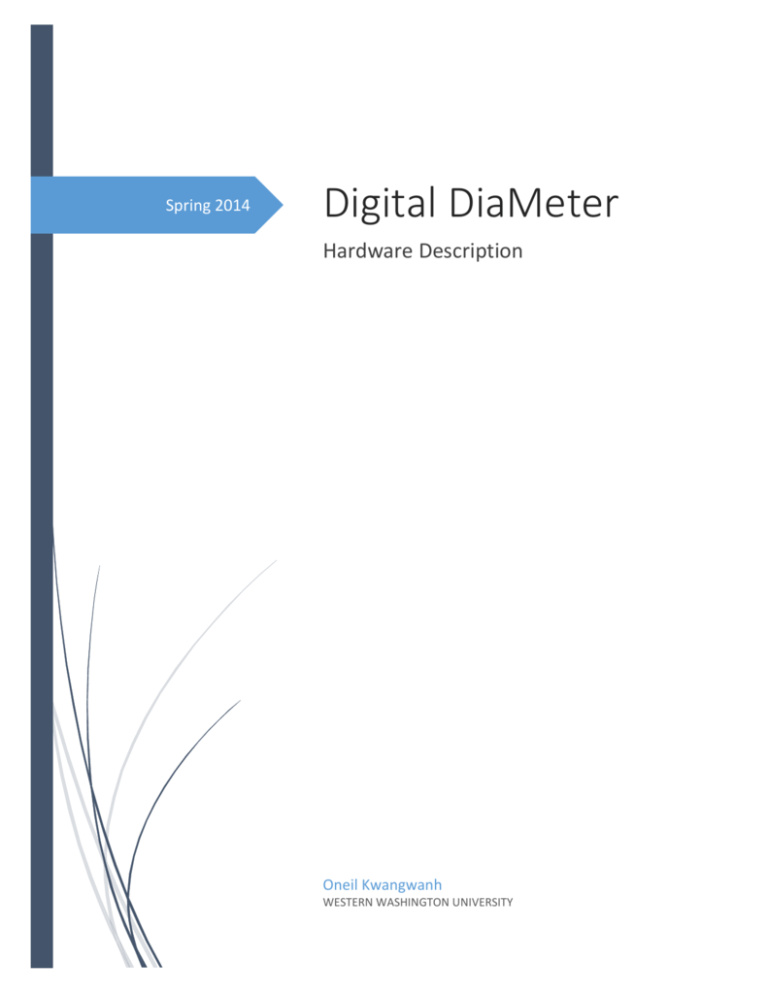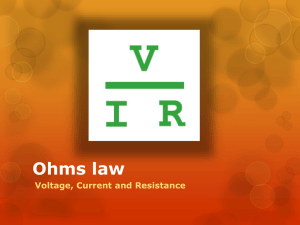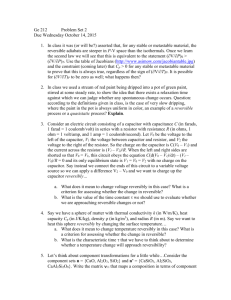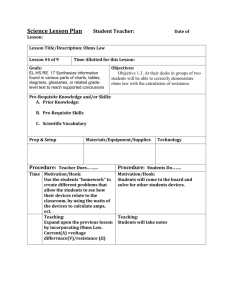Digital DiaMeter - Western Washington University
advertisement

Spring 2014 Digital DiaMeter Hardware Description Oneil Kwangwanh WESTERN WASHINGTON UNIVERSITY INTRODUCTION Digital DiaMeter is an electronic device that will be able to digitally measure the diameter of large, industrial pipes. The idea was first realized by Todd Bishop, when he noticed his employers dangerously atop tall ladders trying to wrap a piece of measuring tape around large pipes. MICROCONROLLER The microcontroller used in the Digital DiaMeter is the cheap ATmega328. This 28-pin part features an 8-bit processor, 23 GPIO pins, 32K bytes of in-system self-programmable flash memory, 2K bytes of SRAM, 1K bytes EEPROM. 3 GPIO pins are used to monitor the three outputs of the rotary encoder, 6 pins for the LCD display, 1 pin will use to digitally power on/off the rotary encoder, and lastly 1 pin will be used to digitally turn the entire system off if it has been running for a certain amount of time. POWER SUPPLY 9V Battery Power is supplied using a lithium 9V battery. Off the shelf 9V batteries have an amphour rating between 400 – 600 maH. Duracell’s PROCELL MN1604 9V battery has a typical discharge rate of 350 hours if the battery is constantly sourcing 2 mA. Because the system powers down the rotary encoder when not in use, the bulk of the current draw comes from the microcontroller. In active mode, the microcontroller draw 0.2 mA. At this rate, the device would be powered for the entire life of the rated battery. Latching Switch Circuit FIGURE 1: Latching Switch Shown above is a latching switch circuit. This is used to handle the case in which a user accidentally leaves the power button on. SHDN will be connected to the SHDN (Shut Down) pin of the LM2841 (DC-DC Voltage regulator). When Q3 is on, the latching switch circuit powers the voltage regulator, and when it is off, the latching switch shuts down the voltage regulator in turn powering down the system. Voltage Regulation FIGURE 2: Voltage Regulation Circuit Voltage is regulated by the LM2841 and the voltage regulation circuit. The input voltage can range from 4.5V – 42V. The components selected match the recommended setup for the 5V output provided by the datasheet. ROTARY ENCODER The E6C2-CWZ6C (rotary encoder) has a power supply of 5 volts provided by the voltage regulation circuit. It has three outputs which are connected to PB1-PB3 of PORTB. The E6C2CSZ6C’s three outputs are open collector, meaning they need to be pulled high. I opted to use the ATmega328’s internal pull-up resistors to reduce the amount of components and cost. The power supply to the encoder is being driven by a p-channel MOSFET. When PB0 is pulled low, the power supply to the encoder is cut off by J1. USER INTERFACE LCD The LCD used is the NHD-0216BZ-FL-YBW, the same LCD using in ETEC454. 6 lines are used and are connected to PD0-PD5. There are 4 data lines, 1 register select, and 1 operation enable signal. Push Buttons There will be two push buttons to aid in user interface. One (SW1) will be used to power the device on and off, while the other (SW2) will be used to take actual measurements. PARTS LIST: ITEM 1 2 2 3 4 5 6 7 8 9 10 11 12 13 14 15 16 17 18 19 SCHEMATIC: QTY 1 1 1 1 2 1 2 1 1 1 4 1 1 2 1 3 4 1 1 1 PART DESCRIPTION MCU, ATmega328 Rotary Encoder, E6C2-CWZ6C LCD, NHD-0216BZ-FL-YBW DC-DC Regulator, LM2841 NPN Transistor, 2N3904 PNP Transistor, 2N3906 Push Button Switch, Capacitor, 2.2 uF Capacitor, 0.15 uF Capacitor, 47 uF Capacitor, 0.1 uF Resistor, 5.62K Ohms Resistor, 1.02K Ohms Resistor, 100K Ohms Resistor, 10 Ohms Resistor, 470K Ohms Resistor, 10K Ohms Resistor, 1K Ohms Resistor, 1M Ohms Xener Diode, MA2YD26 DESIGNATORS U2 U1 U3 U4 Q1, Q3 Q2 SW1, SW2 C1 C2 C3 C4, C5, C6, C7 R1 R2 R3, R12 R4 R5, R6, R9 R7, R8 R10 R11 D1









